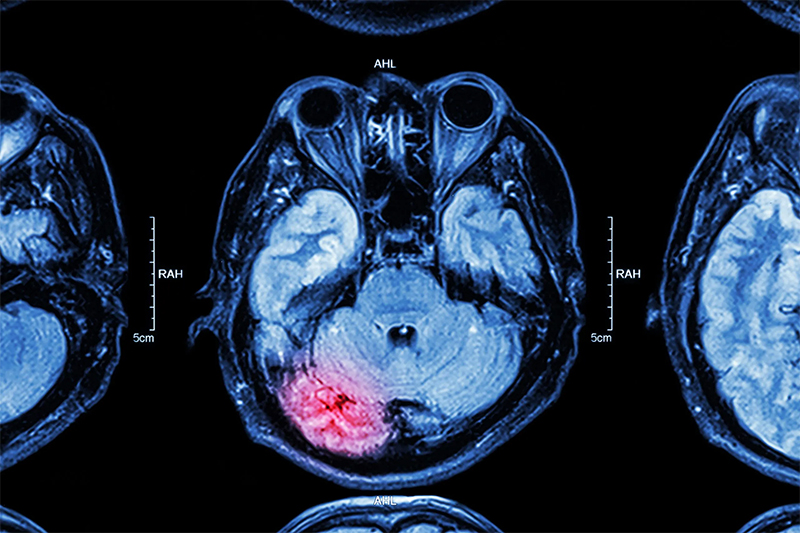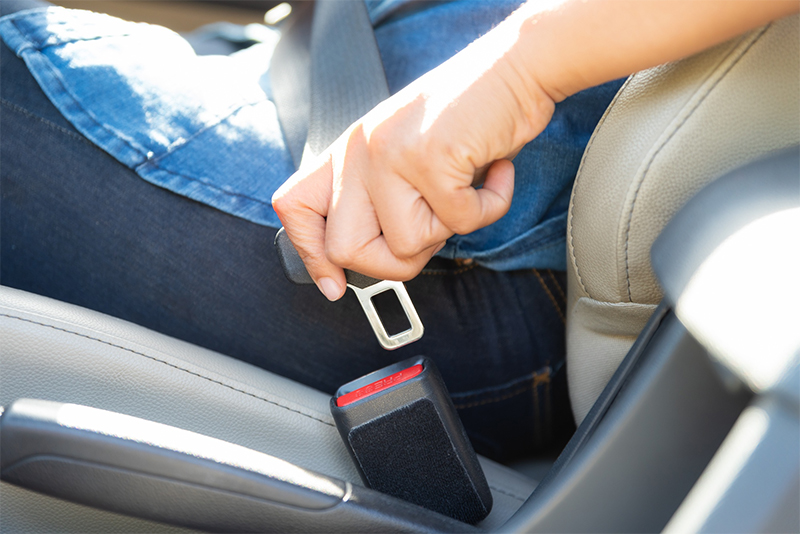Traumatic Brain Injury Statistics Related to Car Accidents
Traumatic brain injuries (TBIs) are a life-changing event for many who are victims of car accidents.
Here are some key statistics regarding TBIs and car accidents in the USA:
1. Auto accidents accounted for approximately 17% of all traumatic brain injury-related deaths.
2. Yearly, motor vehicle crashes result in approximately 16,400 deaths related to traumatic brain injuries (TBIs).
3. The rate of TBI-linked death resulting from transportation crashes has decreased by approximately 40% since 1980.
4. Car crashes were responsible for a quarter of all TBI-related hospitalizations in 2016 and almost a quarter in 2017.
5. Seat belts have a 57 percent effectiveness rate in preventing traumatic and fatal brain injuries.
6. In 2018 and 2019, traumatic brain injuries (TBIs) caused by motor vehicle crashes resulted in an average of 10,291 fatalities annually.
7. Auto accidents accounted for a majority of TBI-related deaths (55.8%) in youth 5–14 years.
8. The rates of traumatic brain injury-related emergency department visits due to motor vehicle crashes are highest among individuals aged 15-24 years.
9. Males that are American Indian or Alaska Native had higher rates of TBI-related deaths when compared to other racial groups related to motor vehicle crashes.
10. Motor vehicle crashes ranked as the third most common cause of TBI-related deaths in 2016 and 2017.

Approximately 17% of all traumatic brain injury-related deaths were caused by motor vehicle crashes.
Traumatic brain injuries (TBIs) are a major public health concern, and car accidents are one of the leading causes of TBI-related deaths.
According to a recent study, approximately 17% of all TBI-related deaths were caused by unintentional motor vehicle crashes. This is an alarming statistic that demonstrates just how serious the effects of car accidents can be on individuals and their families. [1]
Annually, traumatic brain injuries (TBIs) from motor vehicle accidents result in about 16,400 deaths.
According to the National Center for Biotechnology Information, there were 218,936 emergency department visits, 56,864 hospitalizations, and 16,402 deaths resulting from TBIs caused by car accidents on average. [2]
These numbers reveal the severity of this type of injury and demonstrate the importance of taking necessary precautions when driving to help prevent such injuries from occurring.

Since 1980, the rate of TBI-linked death resulting from traffic crashes has decreased significantly.
According to the CDC, there has been a notable decline in the rate of TBI-linked deaths caused by transportation crashes since 1980. Reports indicate that there has been a significant decrease of approximately 40% in these fatalities since that time.
The CDI suggests that several factors may have contributed to this decrease. Certain factors contributing to positive changes in road safety include an uptick in seat belt and child safety seat usage, a rise in the number of vehicles equipped with airbags, and a decline in instances of driving under the influence. The CDC also emphasizes the importance of ongoing support for these favorable developments.
Car accidents cause about 25% of TBI-related hospitalizations.
In 2016 and 2017, motor vehicle crashes accounted for a significant portion of traumatic brain injury (TBI) related hospitalizations. According to the most recent data from the Centers for Disease Control and Prevention (CDC), 25.0% of all TBI-related hospitalizations in 2016 and 24.5% in 2017 were due to motor vehicle crashes. [3]
This shows that motor vehicle crashes are a major cause of TBI-related hospitalizations and underscores the importance of taking necessary precautions when driving to help prevent such injuries from occurring.
<
Seat belts have been found to be 57 percent effective in preventing traumatic and fatal brain injuries.
Seat belts are a critical safety feature in vehicles, and their effectiveness in preventing traumatic and fatal brain injuries cannot be overstated. Studies have shown that seat belts are approximately 57 percent effective in reducing the risk of such injuries in car accidents.
Seat belts work by restraining occupants during a crash, preventing them from being thrown around inside the vehicle or ejected from it. This restraint is important in minimizing the impact on the head and brain, which significantly reduces the risk of traumatic and fatal brain injuries.

In both 2018 and 2019, traumatic brain injuries caused by motor vehicle crashes resulted in an estimated 10,291 deaths each year.
Traumatic brain injuries (TBIs) caused by motor vehicle crashes are an unfortunate reality of life and represent a growing public health concern. According to the Centers for Disease Control and Prevention (CDC), in 2018 and 2019, the number of fatalities resulting from TBIs caused by motor vehicle crashes was 10,291 annually. [1]
Motor vehicle crashes were responsible for the majority of TBI-related deaths (55.8%) in youth aged 5-14 years.
Traumatic brain injuries (TBI) are a major cause of death and disability among young people, particularly those between the ages of 5-14. Motor vehicle crashes are a leading cause of TBI-related deaths among this age group, accounting for 55.8% of all such fatalities in the United States. This is especially concerning given that motor vehicle crashes are largely preventable. [5]
The TBI rates for emergency department visits due to motor vehicle crashes were highest among individuals aged 15-24 years old.
According to the Centers for Disease Control and Prevention (CDC), motor vehicle crashes are the leading cause of TBI-related emergency department visits in the United States.
The rates of TBI-related emergency department visits due to motor vehicle crashes were highest among individuals aged 15-24 years ( 236.4 visits per 100,000 people), 25-34 years (164.8 visits per 100,000 people), and 35-44 years (109.1 visits per 100,000 people). [3]

American Indian or Alaska Native males experienced elevated rates of TBI-related fatalities as a result of motor vehicle accidents.
Recent studies have revealed that American Indian or Alaska Native males are more likely to suffer from traumatic brain injuries (TBIs) related to motor vehicle crashes than any other racial group.
Impairments caused by alcohol and/or narcotics are recognized as known risk factors for motor vehicle crashes. In 2019, the ratio of male alcohol-impaired drivers to female alcohol-impaired drivers in fatal crashes was 4 to 1. Rates of alcohol-impaired driving deaths among AI/AN Non-Hispanic persons are significantly higher compared to other racial and ethnic groups, ranging from 2 to 17 times higher. [1]
Motor vehicle crashes were the third most common cause of TBI-related deaths in 2016 and 2017.
Traumatic brain injury (TBI) is a serious form of head injury that can result in permanent disability or death. In the United States, motor vehicle crashes are a major cause of TBI-related fatalities.
According to data from the Centers for Disease Control and Prevention (CDC), motor vehicle crashes accounted for 11,541 TBI-related deaths in 2016 and 11,098 in 2017.
This placed motor vehicle crashes as the third most common cause of TBI-related deaths. The age-adjusted rates of motor vehicle crash-related TBI deaths were 3.5 and 3.4 in 2016 and 2017, respectively. [3]

If you or a loved one has suffered a traumatic brain injury due the the negligence of another party contact our experienced personal injury attorneys at Goldberg & Loren.
Traumatic Brain Injury Statistics Related to Car Accidents Infographic
Sources:
[1] SURVEILLANCE REPORT. (n.d.). Centers for Disease Control and Prevention. Retrieved 2020, from https://www.cdc.gov/traumaticbraininjury/pdf/TBI-surveillance-report-2018-2019-508.pdf
[2] Viano, D. C., Parenteau, C. S., Xu, L., & Faul, M. M. (2017, April 5). Head injuries (TBI) to adults and children in motor vehicle crashes. Traffic Injury Prevention; Taylor & Francis. https://doi.org/10.1080/15389588.2017.1285023
[3] CDC Grand Rounds: Reducing Severe Traumatic Brain Injury in the United States. (2013, July 12). https://www.cdc.gov/mmwr/preview/mmwrhtml/mm6227a2.htm
[4] https://www.braininjurymn.org/public-awareness/statistics.php. (n.d.). https://www.braininjurymn.org/public-awareness/statistics.php
[5] Brain Injury Statistics. (2024). Minnesota Brain Injury Alliance. Retrieved July 5, 2024, from https://braininjurymn.org/public-awareness/statistics.php
[6] A. (2023, August 14). Car Accidents and Brain Injury Statistics: 2020. TreatNOW. https://treatnow.org/knowledgebase/car-accidents-and-brain-injury-statistics-2020/


